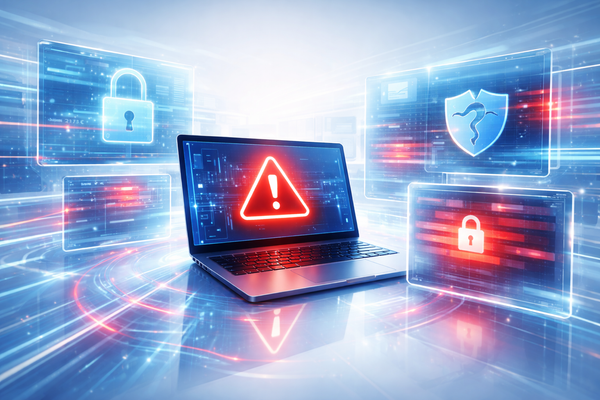Bait and Switch: Unmasking the Allure of Phishing Scams

Today’s interconnected world has brought undeniable advantages to our day-to-day activities. However, the threads of technology weave together opportunities and challenges in equal measure.
While technological advancements have ushered in an era of unprecedented access to information, they have also opened the floodgates to cybersecurity threats.
Phishing scams are among the most notable digital challenges that netizens have to face. These scams cunningly exploit the very channels that facilitate our global connections, turning communication pathways into weapons of deceit.
As we sail this vast and often vulnerable digital sea, understanding these threats and their nuances is not just beneficial—it is imperative for protecting our security.
How Phishing Scams Work
Phishing scams primarily exploit human factors and technological loopholes to steal valuable information or financial assets. Threat actors that orchestrate these malicious attempts begin by crafting a facade of legitimacy, often through emails or messages that mimic the style and tone of trusted entities.
Social engineering techniques are frequently used to instill a sense of urgency or fear in victims, prompting rash actions, such as clicking on a malicious link or voluntarily providing confidential information.
Understanding the mechanics behind these scams is a key step toward developing effective defenses against them.
Types of Phishing Scams
Phishing comes in many forms, each designed to target different security components. With a variety of deceptive tactics at their disposal, cybercriminals perpetually hone their skills to exploit human psychology and technological gaps.
Awareness of the different types of phishing scams is critical in safeguarding information and assets in this digital age. Considering that each type of attack has distinct characteristics and targets specific vulnerabilities, it’s safe to say that recognizing and understanding the nuances of these threats is of the utmost importance in developing effective countermeasures.
- Email Phishing: This scenario consists of broad, untargeted attacks where con artists craft and send deceptive emails en masse, hoping to catch unsuspecting individuals.
- Spear Phishing: More directed and dangerous than its previous counterpart, spear phishing campaigns weaponize emails by configuring them to target specific individuals or companies, using social engineering techniques to make them appear legitimate.
- Clone Phishing: Threat actors create nearly identical replicas of previous legitimate emails to trick users into thinking they’re genuine.
- Whaling: These sophisticated attacks target high-level executives with the aim of stealing sensitive company information. Victims are enticed into sharing highly sensitive information or sending wire transfers to attacker-owned accounts.
- Smishing and Vishing: In this scenario, perpetrators use SMS and voice calls to exploit personal interactions and extract personal details or financial assets. Smishing and vishing scammers typically employ urgency and fear to disarm their victims, impeding their decision-making skills and prompting them to act hastily.
Recognizing the Red Flags
Despite their sophistication, phishing scams are often riddled with red flags that could alert a vigilant recipient. However, to recognize these signs you must know what to look after.
Some of the most common indicators include unusual sender details that attempt to mimic legitimate sources, messages with a sense of urgency that pressure you into immediate action, and grammatical or spelling errors that rarely seen in official communication.
Furthermore, suspicious links or attachments that don't align with the sender's alleged identity are dead giveaways. By learning to spot these cues, you can greatly enhance your defensive posture against these deceptive threats.
- Sender Information: Phishing attempts often originate from email addresses that mimic legitimate sources but have slight anomalies. Look out for discrepancies such as slight misspellings of company names or almost identical phone numbers to spot phishing scams.
- Content and Urgency: In phishing messages, threat actors typically create a sense of urgency or use alarming language to provoke immediate action. If you find yourself in a high-pressure scenario, take a step back and re-assess the situation, as you might be scammed.
- Grammar and Stylistic Issues: Keep an eye out for unusual language use or grammatical errors that wouldn't be present in professional correspondence. Generic greetings or unfamiliar tones in emails or messages are almost always a clear indicator of a scam.
- Link and Attachment Safety: Always verify the authenticity of links and attachments before engaging with them, as they may lead to malicious websites or download harmful software. Cross-check the legitimacy of the link by comparing it with the entity’s official website, if possible.
Building a Defense Against Phishing Scams
Building a robust defense against phishing scams requires a multi-faceted approach that encompasses both specialized tools and informed human vigilance.
Strong, up-to-date security measures such as spam filters and antivirus software are crucial. Regular security training sessions that educate employees and individuals on the latest phishing tactics and prevention strategies are equally important.
Additionally, robust security methods like multi-factor authentication (MFA) can significantly reduce the risk of unauthorized access, ensuring that, even if phishing attempts are successful, the damage can be contained.
- Security Training: Regularly train employees and individuals to recognize and react to phishing attempts. Skepticism of any received messages or emails can go a long way in curbing threat actors’ attempts at harvesting personal data or stealing financial assets from their targets.
- Use Scam-Detection Services: Specialized scam detection services like Bitdefender’s Scamio can give you the upper hand against phishing attempts and other scams. You can send any tricky text, email, message, link, image, or QR code to receive an instant analysis, revealing if the content is likely a scam. It also works with described scenarios: describe the situation as accurately as possible and Scamio will provide you with an assessment of its perceived legitimacy. Scamio is free and available on Facebook Messenger, WhatsApp and your web browser. You can also help others stay safe by sharing Scamio with them in France, Germany, Spain, Italy, Romania, Australia and the UK.
- Email and Web Filters: Use advanced filters that can detect and block phishing attempts before they reach inboxes.
- Enforcing Multi-Factor Authentication: Strengthening security with robust authentication methods like two-factor or multi-factor authentication can provide an additional layer of security.
- Use Specialized Security Software: Security solutions like Bitdefender Ultimate Security can keep you safe from phishing scams. It encompasses an anti-phishing module that detects and blocks websites masquerading as legitimate to steal data such as passwords or credit card numbers. It can also protect you from other digital intrusions such as viruses, worms, Trojans, zero-day exploits, rootkits, ransomware, and spyware.
Reporting and Educating
Proactive reporting and education are fundamental in the fight against phishing. This process involves promptly reporting suspected phishing attempts to the authorities, which can help mitigate the attack and prevent future ones.
Additionally, educating both individuals and teams within organizations on how to recognize and respond to phishing can drastically reduce the likelihood of successful attacks.
Encouraging an environment where knowledge and experiences are shared openly enhances the collective ability to identify and neutralize phishing threats.
- Immediate Action: Do not interact with potential phishing content or download attachments from suspicious emails.
- Report Immediately: Notify your IT department or relevant authorities such as the FTC or local police, or use tools like Google’s Safe Browsing to report suspicious websites that might harbor phishing scams.
- Community Awareness: Share your knowledge and experiences within your community to elevate the collective response to phishing threats and prevent further spread among colleagues, friends and family.
Conclusion
As we continue to chart our course through the digital sea, the sophistication and wild variety of scams remind us of the importance of continuous vigilance and proactive cybersecurity measures.
While phishing scams are still highly successful even nowadays, staying informed can help us spot critical red flags to identify and deter these deceptive tactics.
A combination of robust defensive strategies, stringent authentication measures, specialized software and regular training can give us the upper hand in the never-ending battle against phishing scams and other cyber threats.
Frequently Asked Questions About Phishing Scams
- How do phishing scams work?
Threat actors employing phishing scams operate by masquerading as trustworthy entities to deceive individuals into disclosing personal information or sending money.
- What are the four types of phishing?
Four of the most common types of phishing include email phishing, marked by broadly targeted, unsolicited emails, spear phishing, which targets specific individuals, whaling, aimed at high-level executives, and smishing/vishing, which uses SMS or voice calls.
- What do phishing scams ask for?
Phishing scams typically ask for sensitive details like passwords, financial information, Social Security Numbers, and personal identification numbers to gain unauthorized access or steal identities.
tags
Author
Vlad's love for technology and writing created rich soil for his interest in cybersecurity to sprout into a full-on passion. Before becoming a Security Analyst, he covered tech and security topics.
View all postsRight now Top posts
How Do You Manage Your Passwords? We Ask Netizens
December 18, 2025
Cybercriminals Use Fake Leonardo DiCaprio Film Torrent to Spread Agent Tesla Malware
December 11, 2025
FOLLOW US ON SOCIAL MEDIA
You might also like
Bookmarks









